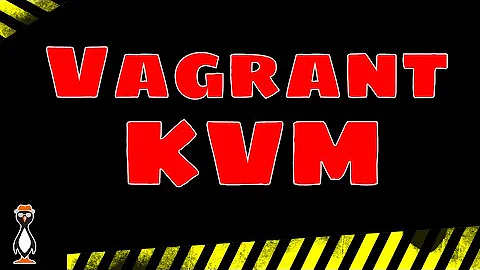how to create custom vagrant box from libvirt/kvm instance?
after spending time with vagrant i got the solution for custom box.
first of all install any Linux OS in libvirt/qvm and login to it for customization and create vagrant user with password vagrant
adduser vagrant
vagrant user should be able to run sudo commands without a password prompt
sudo visudo -f /etc/sudoers.d/vagrant
and paste
vagrant ALL=(ALL) NOPASSWD:ALL
do whatever you want to customize your vagrant box and install openssh-server if not installed previously
sudo apt-get install -y openssh-server
put ssh key from vagrant user
mkdir -p /home/vagrant/.ssh
chmod 0700 /home/vagrant/.ssh
wget --no-check-certificate \
https://raw.github.com/mitchellh/vagrant/master/keys/vagrant.pub \
-O /home/vagrant/.ssh/authorized_keys
chmod 0600 /home/vagrant/.ssh/authorized_keys
chown -R vagrant /home/vagrant/.ssh
open sudo vi /etc/ssh/sshd_config and change
PubKeyAuthentication yes
AuthorizedKeysFile %h/.ssh/authorized_keys
PermitEmptyPasswords no
PasswordAuthentication no
restart ssh service using
sudo service ssh restart
install additional development packages for the tools to properly compile and install
sudo apt-get install -y gcc build-essential linux-headers-server
do any change that you want and shutdown the VM . now , come to host machine on which guest VM is running and goto the /var/lib/libvirt/images/ and choose raw image in which you did the change and copy somewhere for example /test
cp /var/lib/libvirt/images/test.img /test
create two file metadata.json and Vagrantfile in /test
do entry in metadata.json
{
"provider" : "libvirt",
"format" : "qcow2",
"virtual_size" : 40
}
and in Vagrantfile
Vagrant.configure("2") do |config|
config.vm.provider :libvirt do |libvirt|
libvirt.driver = "kvm"
libvirt.host = 'localhost'
libvirt.uri = 'qemu:///system'
end
config.vm.define "new" do |custombox|
custombox.vm.box = "custombox"
custombox.vm.provider :libvirt do |test|
test.memory = 1024
test.cpus = 1
end
end
end
convert test.img to qcow2 format using
sudo qemu-img convert -f raw -O qcow2 test.img ubuntu.qcow2
rename ubuntu.qcow2 to box.img
mv ubuntu.qcow2 box.img
Note: currently,libvirt-vagrant support only qcow2 format. so , don't change the format just rename to box.img. because it takes input with name box.img by default.
create box
tar cvzf custom_box.box ./metadata.json ./Vagrantfile ./box.img
add box to vagrant
vagrant box add --name custom custom_box.box
go to any directory where you want to initialize vagrant and run command bellow that will create Vagrant file
vagrant init custom
start configuring vagrant VM
vagrant up --provider=libvirt
enjoy !!!
Related videos on Youtube
pl_rock
I am working as a Technical lead. I Like python, container , kubernetes, Open source tools, cloud, PaaS , etc.
Updated on September 18, 2022Comments
-
 pl_rock over 1 year
pl_rock over 1 yearThere are many resources on the Internet to create a custom vagrant box from a VirtualBox instance. But I want to know a direct method to create a custom vagrant box directly from a kvm/libvirt instance . Please don't suggest vagrant-mutate or any that convert VirtualBox to another provider.
-
ThorSummoner about 7 yearsI wanted to point out, that after spending all that time tar'ing up them gigs, vagrant spends an equivalent amount of time decompressing that tar again. :fubar:
-
ThorSummoner about 7 yearsto skip the round-trip tar/untar, you might be able to drop your Vagrantfile, meta.json, and box.img directly in
~/.vagrant.d/boxes/<name>/0/libvirt/ -
 avimehenwal almost 7 yearsUPvote for so clear explanation for a relatively complicated procedure. Thanks
avimehenwal almost 7 yearsUPvote for so clear explanation for a relatively complicated procedure. Thanks





